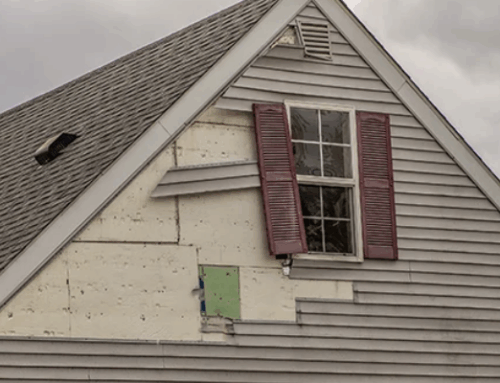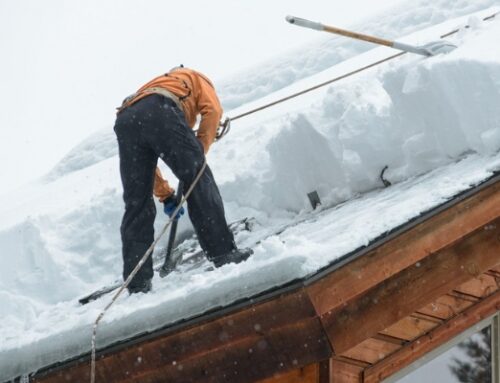Vinyl siding is a popular choice for homeowners due to its durability, affordability, and low maintenance requirements. However, like any exterior surface, vinyl siding can benefit from regular care and maintenance to ensure its longevity and keep your home looking its best.
In this comprehensive guide, we’ll explore essential tips and techniques for maintaining your vinyl siding to maximize its lifespan and preserve its appearance. From cleaning and inspecting for damage to addressing common issues like mold and mildew, we’ll provide homeowners with the knowledge and resources they need to care for their vinyl siding effectively.
Whether you’re a new homeowner looking to protect your investment or simply seeking to prolong the life of your existing vinyl siding, this guide will serve as your roadmap to maintaining your siding for years of beauty and durability. Join us as we delve into the best practices for vinyl siding maintenance and empower you to keep your home looking its best for years to come.
1. Regular Cleaning
- Frequency: Clean your vinyl siding at least once a year to remove dirt, dust, and other debris that can accumulate over time.
- Cleaning Solution: Use a mixture of mild soap and water or a specialized vinyl siding cleaner to gently scrub the surface.
- Avoid Pressure Washing: While vinyl siding is durable, avoid using high-pressure washers, as they can damage the siding or force water behind it, leading to mold and mildew growth.
2. Inspect for Damage
- Visual Inspection: Regularly inspect your vinyl siding for signs of damage, such as cracks, chips, or warping.
- Addressing Damage: Promptly repair any damaged areas to prevent moisture infiltration and further deterioration.
- Check Seals and Caulking: Inspect the seals around windows, doors, and other penetrations to ensure they are intact and free of cracks or gaps.
3. Prevent Mold and Mildew
- Keep Siding Dry: Ensure that water does not accumulate or remain trapped against the siding, as this can promote mold and mildew growth.
- Trim Vegetation: Trim trees, bushes, and other vegetation near your home to prevent them from shading the siding and trapping moisture.
- Apply Preventive Treatments: Consider applying a mold and mildew inhibitor to your vinyl siding to deter growth and preserve its appearance.
4. Avoid Heat Damage
- Distance from Heat Sources: Keep heat sources, such as grills and outdoor fire pits, a safe distance away from vinyl siding to prevent warping or melting.
- Reflective Surfaces: Be cautious when installing reflective surfaces, such as windows or glass doors, near vinyl siding, as they can amplify heat and cause damage.
- Shade Siding: Utilize shading techniques, such as awnings or strategically planted trees, to protect vinyl siding from direct sunlight and excessive heat exposure.
5. Remove Stains Promptly
- Identify Stains: Quickly address any stains or discoloration on your vinyl siding, such as rust or mildew stains.
- Gentle Cleaning: Use a non-abrasive cleaner and a soft brush or cloth to gently scrub away stains without damaging the siding.
- Test Solutions: Before applying a cleaning solution to the entire siding, test it on a small, inconspicuous area to ensure it does not cause discoloration or damage.
6. Prevent Insect Damage
- Seal Entry Points: Seal gaps and cracks in the siding to prevent insects from entering and nesting behind it.
- Trim Vegetation: Keep vegetation trimmed away from your home to deter insects from accessing the siding.
- Regular Inspection: Regularly inspect your vinyl siding for signs of insect activity, such as holes or nests, and take appropriate measures to address any issues.
7. Protect Siding from Impact
- Be Mindful: Avoid hitting or leaning heavy objects against vinyl siding, as it can dent or crack upon impact.
- Keep Vehicles Clear: Park vehicles a safe distance away from vinyl siding to prevent accidental damage from doors, bumpers, or debris.
- Secure Loose Objects: Secure loose objects, such as outdoor furniture or toys, to prevent them from damaging the siding during windy conditions.
8. Maintain Gutters and Downspouts
- Proper Drainage: Ensure that gutters and downspouts are clear of debris and properly channel water away from the siding to prevent water damage.
- Regular Cleaning: Clean gutters and downspouts regularly to prevent clogs and backups that can lead to water infiltration and damage to the siding.
- Inspect for Leaks: Regularly inspect gutters and downspouts for leaks or damage and repair them promptly to prevent water from dripping onto the siding.
9. Protect Siding During Home Projects
- Cover Siding: When undertaking home improvement projects, such as painting or roof repairs, cover vinyl siding with protective tarps or plastic sheeting to prevent damage from debris or spills.
- Use Caution: Exercise caution when using power tools or ladders near vinyl siding to avoid accidental damage.
- Consult Professionals: If you’re unsure how to protect your siding during a home project, consult with a professional contractor for guidance.
10. Schedule Professional Inspections
- Annual Inspections: Schedule annual inspections with a qualified contractor to assess the condition of your vinyl siding and address any maintenance or repair needs.
- Expert Advice: Seek advice from experienced professionals regarding the best maintenance practices for your specific type of vinyl siding and climate conditions.
- Early Detection: Professional inspections can help identify potential issues early on, allowing for timely repairs and preventive measures to extend the lifespan of your siding.
- Peace of Mind: Regular professional inspections provide homeowners with peace of mind, knowing that their siding is being properly maintained and cared for by experts in the field.
Conclusion:
Maintaining your vinyl siding is essential for preserving its appearance, functionality, and longevity. By implementing a regular maintenance routine and following the tips outlined in this guide, homeowners can protect their investment and ensure that their siding remains in optimal condition for years to come.
From regular cleaning and inspections to addressing damage promptly and preventing common issues like mold and insect infestations, proactive maintenance efforts can extend the lifespan of your vinyl siding and enhance the curb appeal of your home. Additionally, scheduling professional inspections and seeking expert advice when needed can provide peace of mind and help homeowners address any maintenance or repair needs effectively.
By taking the time to care for your vinyl siding properly, you can protect your home from the elements and enjoy the aesthetic appeal and durability of vinyl siding for years to come. With a little effort and attention to detail, you can ensure that your home’s exterior remains beautiful, functional, and well-protected for your enjoyment.






